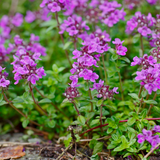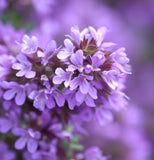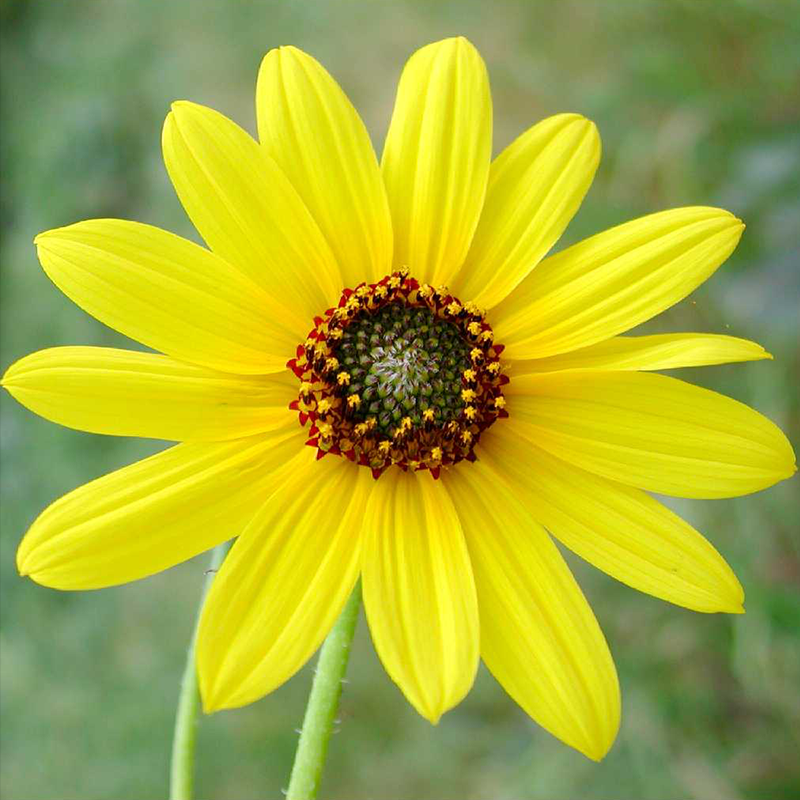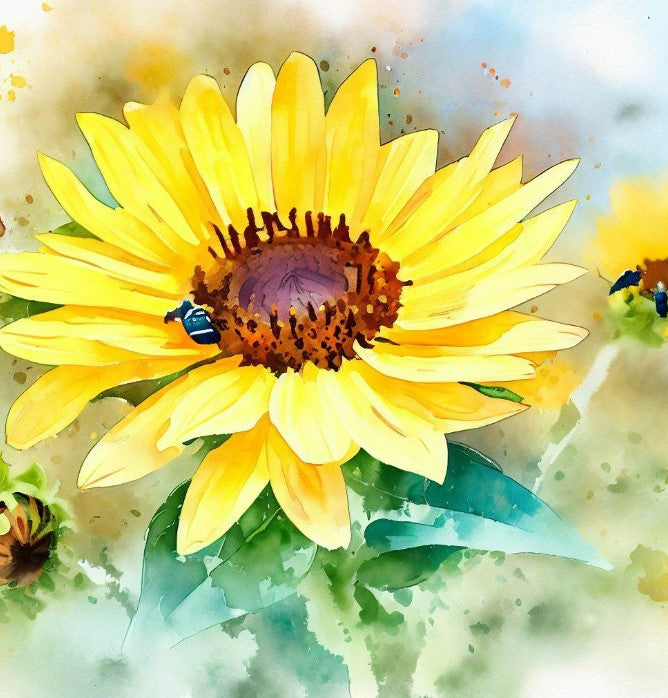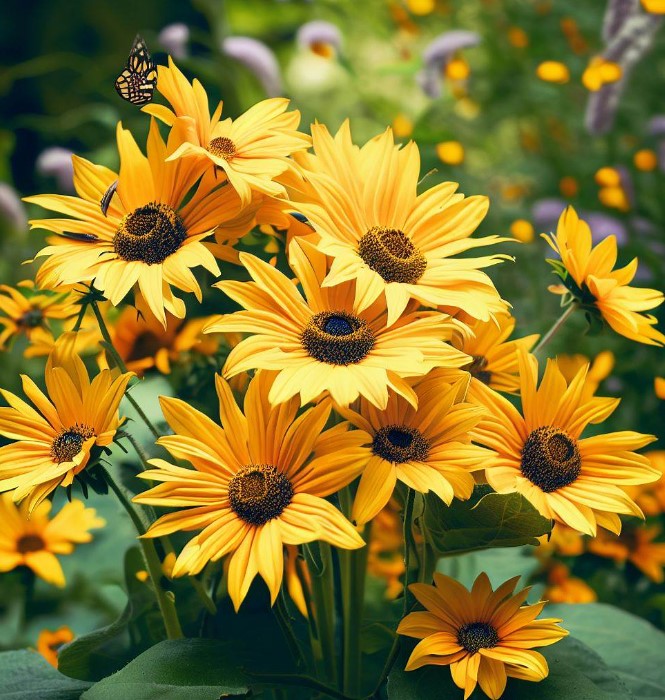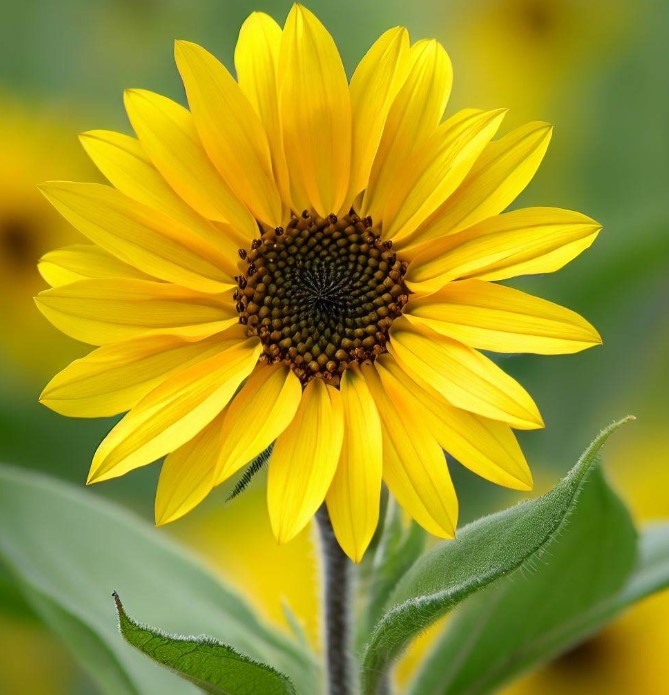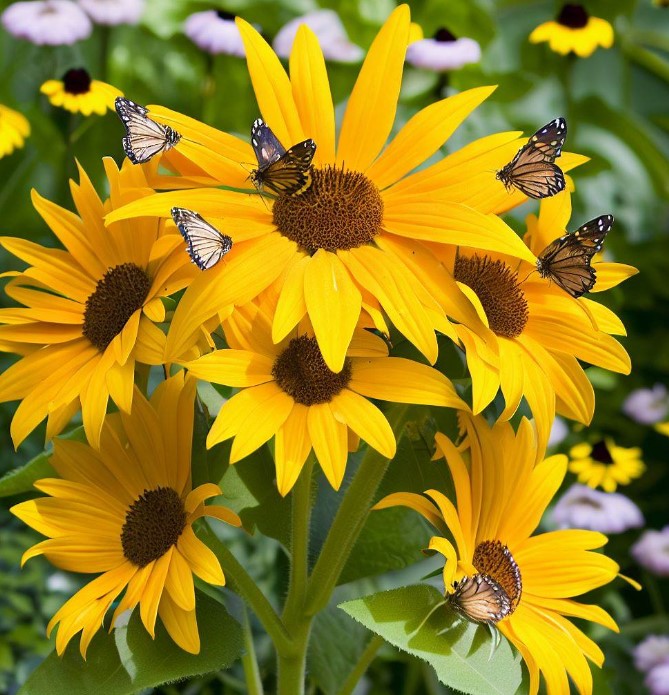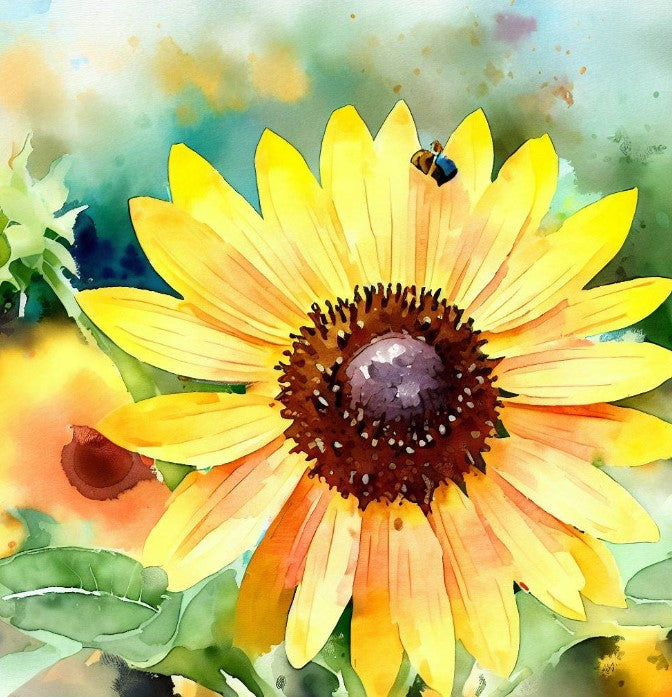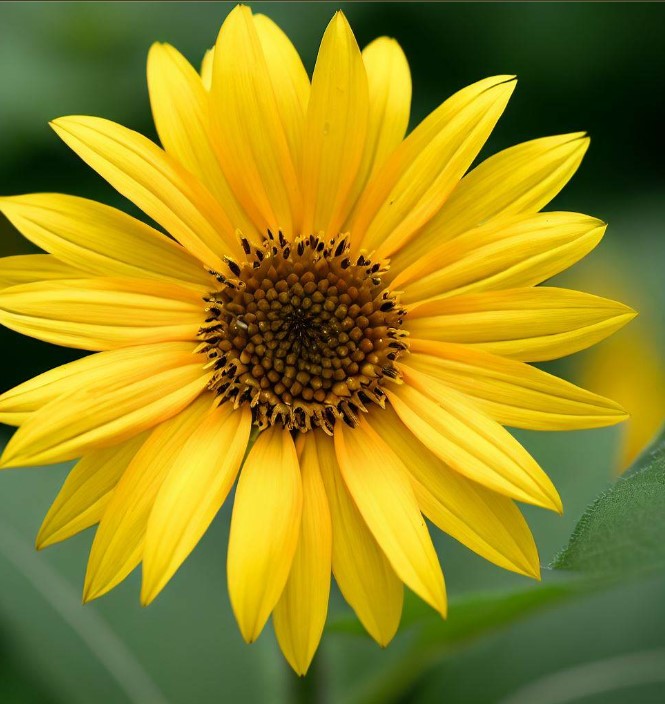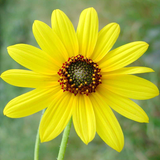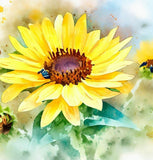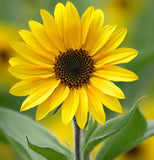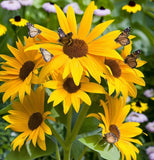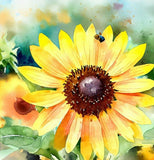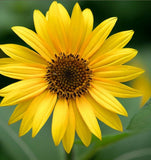HELIANTHUS petiolaris (Prairie Sunflower)
HELIANTHUS petiolaris (Prairie Sunflower) is a perennial flowering plant native to the central and western regions of North America. It is a member of the Asteraceae family and is known for its tall stature and vibrant yellow flowers.
Prairie Sunflower is a robust perennial that typically grows to a height of 3 to 8 feet (0.9 to 2.4 meters) and spreads about 2 to 4 feet (0.6 to 1.2 meters) wide. It has thick, hairy stems and leaves. The leaves are lance-shaped and toothed. The plant produces solitary flower heads at the top of each stem.
The flowers of Prairie Sunflower are the highlight of this plant. Each flower head consists of a dark brown center, known as the disc florets, surrounded by bright yellow ray florets. The ray florets are often drooping, giving the flowers a distinctive appearance. The flower heads are typically large, reaching up to 4 inches (10 cm) in diameter.
Prairie Sunflower typically blooms from mid-summer to early fall, depending on the specific growing conditions and climate. The flowering period can last several weeks, providing a burst of color and attracting pollinators to the garden. The bright flowers of Prairie Sunflower are attractive to pollinators, including bees, butterflies, and other beneficial insects. The nectar-rich blooms provide a valuable food source for these insects. Additionally, the seeds produced by the plant are highly sought after by birds, making Prairie Sunflower a valuable addition to wildlife gardens.
Helianthus petiolaris thrives in full sun and well-drained soil. It is adapted to a wide range of soil types, including sandy or loamy soils, but prefers soil that is not overly fertile. Prairie Sunflower is highly tolerant of drought and is often found in dry prairie habitats. Once established, it requires minimal watering.
Prairie Sunflower is generally low-maintenance. Deadheading spent flowers can help promote prolonged blooming and prevent self-seeding if desired. However, allowing some seed heads to mature can provide food for birds and contribute to the natural reseeding of the plant. The tall stems may benefit from staking to prevent them from bending or breaking under windy conditions.
Helianthus petiolaris can be grown from seeds. Sow the seeds directly into the garden soil in early spring or late fall. The seeds require a period of cold stratification for successful germination. Provide adequate spacing between plants to accommodate their size. Prairie Sunflower is often grown in prairie or wildflower gardens, as well as for erosion control and habitat restoration projects.
Prairie Sunflower (Helianthus petiolaris) is a striking perennial plant that brings a touch of the prairie to gardens and landscapes. With its tall stature, vibrant yellow flowers, and wildlife appeal, it is a valuable addition for attracting pollinators and supporting biodiversity. Whether grown for its ornamental value or to create prairie-like habitats, Prairie Sunflower can make a bold and beautiful statement in the garden.
| Number of Seeds | Max Coverage Area (Square Ft.) | |
|---|---|---|
| 1OZ | 12,500 | 500 |
| 1/4LB | 50,000 | 2,000 |
| 1/2LB | 100,000 | 4,000 |
| 1LB | 200,000 | 8,000 |
| 5LB | 1,000,000 | 40,000 |
Scientific Name: Helianthus Petiolaris
Common Name: Prairie Sunflower
Plant Type: Annual
Family: Asteraceae
Native Range: Central to Western North America
Growth Height: 40-60"
Spread: 10-18 "
Habit: Herb
Zone: 4-8
Exposure: Unable to grow in shady areas, Direct Sunlight
Blooming Season: Summer, Fall
Attracts: Flies, Butterflies and Birds
Texture: Rough
Flower Color: Yellow-ray florets with red-brown disc
Moisture: Dry, Moderate
Maintenance: Low
Resistant: Drought, Deer and Rabbit Resistant
Water Requirement: Average
Soil Type: Dry Sandy soil, Prairies, Along roads
Soil pH: Acid, Neutral and basic soil
Uses: Dressing for sores and swellings, used in Ointment
Germination Range: 9% Dormant%: 71%

